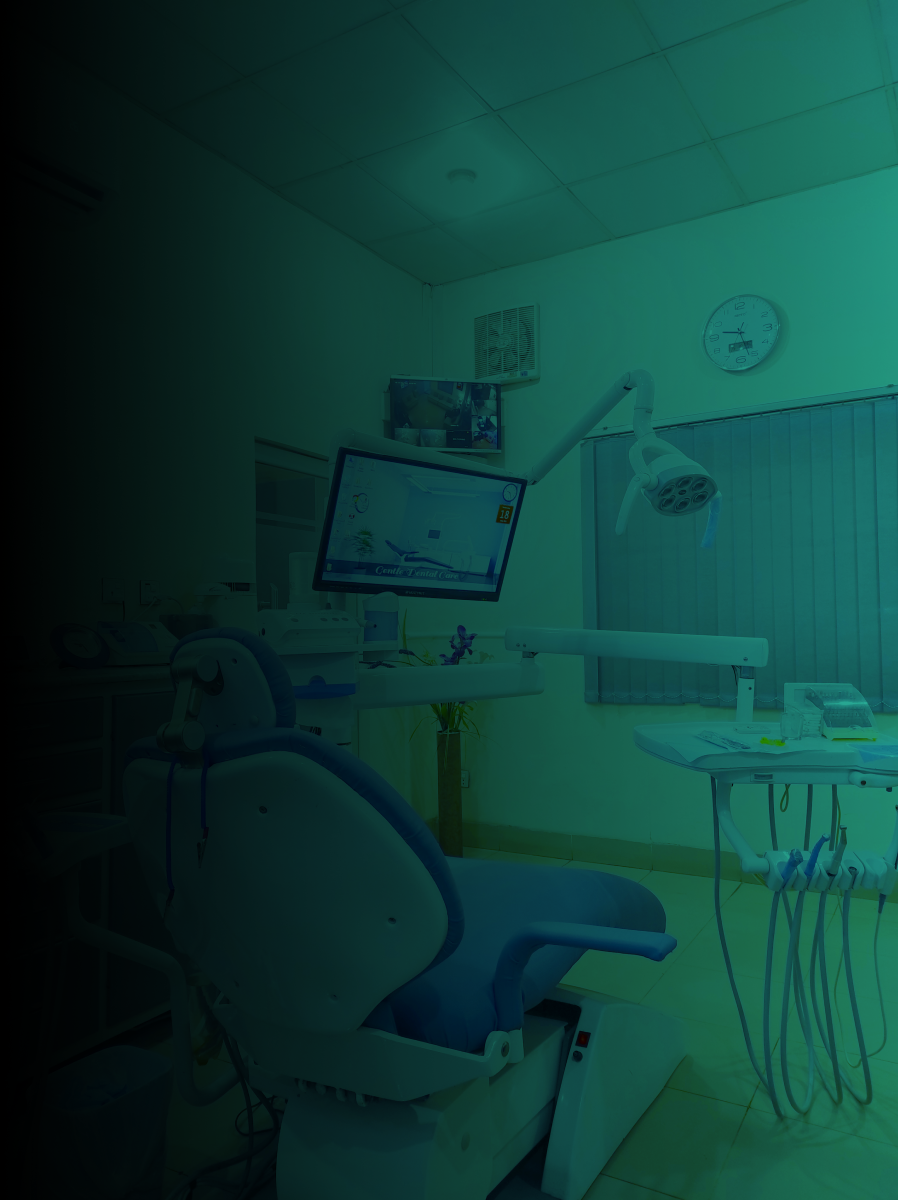Preface
The time is ripe to strategize and implement asset tracking with real-time location systems (RTLS) and way-finding in your hospital. Our agile approach to software development and your technology-friendly software business model can together deliver integrated solutions that enhance the patient experience.
Complex and fragmented infrastructure in large hospitals should be streamlined with RTLS.
Location intelligence and status information from tags and beacons of smart devices, when fed into the Hospital Asset Information Management Solution(HAIMS) deployed by Asahi Technologies, speeds operations, reduces maintenance, increases efficiency, and improves asset utilization. Data received can also be analyzed to influence decision-making at every stage of hospital operations and the clinical workflow.
Make your vision for a smart hospital come true with RTLS-based digital transformation. Read on to learn how to implement HAIMS correctly for coordinated care and to achieve specific outcomes.
— Vinod Subbaiah
Founder and Chief Strategist at Asahi Technologies


If you are looking to implement a real-time location system (RTLS) to track assets in your healthcare organization, it means one/some/all of the following things:
- You are a growing organization with a changing workflow
- Your legacy systems lack the functionalities needed to cope
- You are in the midst of a digital transformation
- You are losing patients to your tech-savvy competitors
- You are losing physical assets due to mismanagement and theft
- Your clinicians are facing burnout and wasting time tracking equipment
Before you embark on your RTLS project, there are some steps you should take to set the stage.
Pre-implementation phase
Most hospital operators may not have measured losses due to missing medical devices and malfunctioning or broken equipment.

If you, too, only have a vague premonition that assets are disappearing and have not assessed the situation, it will do you good to know:
- Empirical evidence suggests that 10-20% of a typical hospital’s mobile assets are lost or stolen during their lifecycle– and roughly 75% of the allotted equipment maintenance time is spent looking for them.
- Surveys have estimated that nurses spend one hour per shift to locate medical equipment, leading to delayed care, slow response times, and lower patient satisfaction. Resultant workflow work arounds cause inefficiency and loss of productivity.
- The number of devices per hospital bed has increased in the past few decades to an average of 13. There is a trend of renting, leasing, and buying more units in response to availability issues instead of focusing on optimizing use through better maintenance and distribution. This increases costs and exacerbates the problem.
Therefore, a thorough audit of all the clinical and medical assets will tell you:
- Number of assets
- Critical and non-critical
- Mobile and stationary
- Functional or redundant
- Lost or misplaced
- Broken -needs repair or servicing
- Trackable or automated IDs required
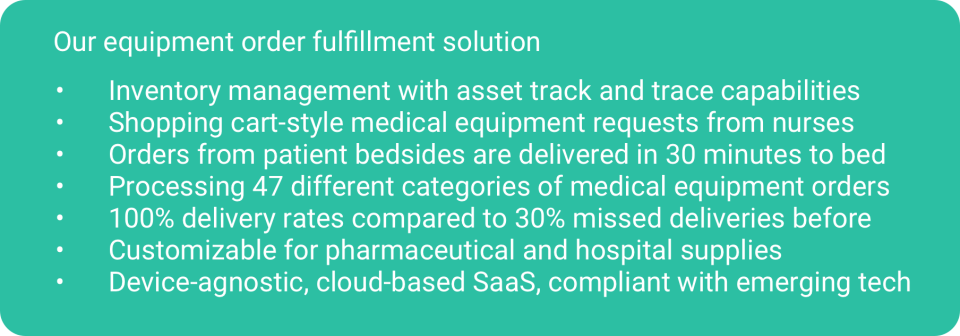
Once you have the facts, you can bank on the “sensorability” of medical devices to plan the pre-implementation steps for one of the track-and-trace technologies most suitable for you.
Assessment and planning: First and foremost, conduct a detailed assessment of your hospital’s ongoing asset management and inventory process. Focus on the pain points and inefficiencies and pinpoint the areas of improvement. It will throw up a blueprint for your new real-time location solution.
Stakeholder engagement: You must gather insights from clinicians, biomedical engineers, facilities operations team, IT team, and departmental heads on how to smoothen the workflow and ensure timely delivery of assets and restocking of inventory. Draft a questionnaire, seek responses to uncover trends, and conduct a root cause analysis for missing assets. Participation will encourage acceptance and effective use of the technological solution you plan to introduce.
Infrastructure readiness: Take stock of the existing infrastructure-including network capabilities, hardware requirements, and integration with existing systems. Ensure that the necessary infrastructure upgrades or modifications are planned and implemented to support the new asset track and trace mechanism and the inventory management system.
Data preparation: Develop data migration plans to facilitate seamless transfer of information from legacy systems to the new system. Ensure the data is cleansed and organized in an interoperable and integrable manner to maintain accuracy and consistency after migration to the new solution.
Regulatory compliance: Read the relevant rules under the Health Insurance Portability and Accountability Act (HIPAA) and Food and Drug Administration (FDA). You should also check if the new system complies with other laws and medical device standards.
Budgeting and resource allocation: You must plan and allocate resources –staff, time, and finances – to manage the project without any hitch. The budget should cover software licensing, hardware procurement, implementation services, training, and maintenance costs. Without a prior understanding of what is required, the project can run into problems.
Training and change management: Minimize resistance to new technologies and processes amongst your employees, with awareness and education programs conducted well in advance. Develop a training module and teach your staff the new functionalities, workflows, and best practices to be followed. If you make them understand the advantages, you will help them adopt the new solution faster and more willingly.
Vendor selection: Perform due diligence and check the credentials of the short-listed vendors. Evaluate the product’s features, scalability, security, customer support, and cost-effectiveness. Assess the effectiveness of the solution in circumstances unique to the healthcare industry. Thoroughly research the background and reputation of the vendors by engaging with their clients who have needs similar to yours.

Implementation phase
Being in the business of patient care means hospitals need to focus on increased visibility that enhances operations and clinical decision-making with the end result of patient satisfaction.
In addition to the real-time location of devices, the sensors and their ability to capture data and ensure proper equipment functioning are crucial aspects of hospital asset inventory management infrastructure.
So, a holistic view of which asset needs to be tracked and why is imperative. IoT sensors provide insights into crucial metrics in important areas of the hospital and impinge on the quality of care:
Hospital beds: Occupancy, temperature, position.
Hand washing stations: Water and soap consumption, time spent on scrubbing.
Medical equipment: Airflow, pressure, oxygen, temperature, humidity, magnet, barcode (in ventilators, anesthesia and dialysis machines, oxygen concentrators, etc.)
Operating rooms: Oxygen, carbon dioxide, differential pressure, air pollution, hygiene.
Patient environment: Ambient temperature and humidity in rooms
Refrigeration: Product simulator, temperature, energy consumption, open-close status, humidity, electric current.
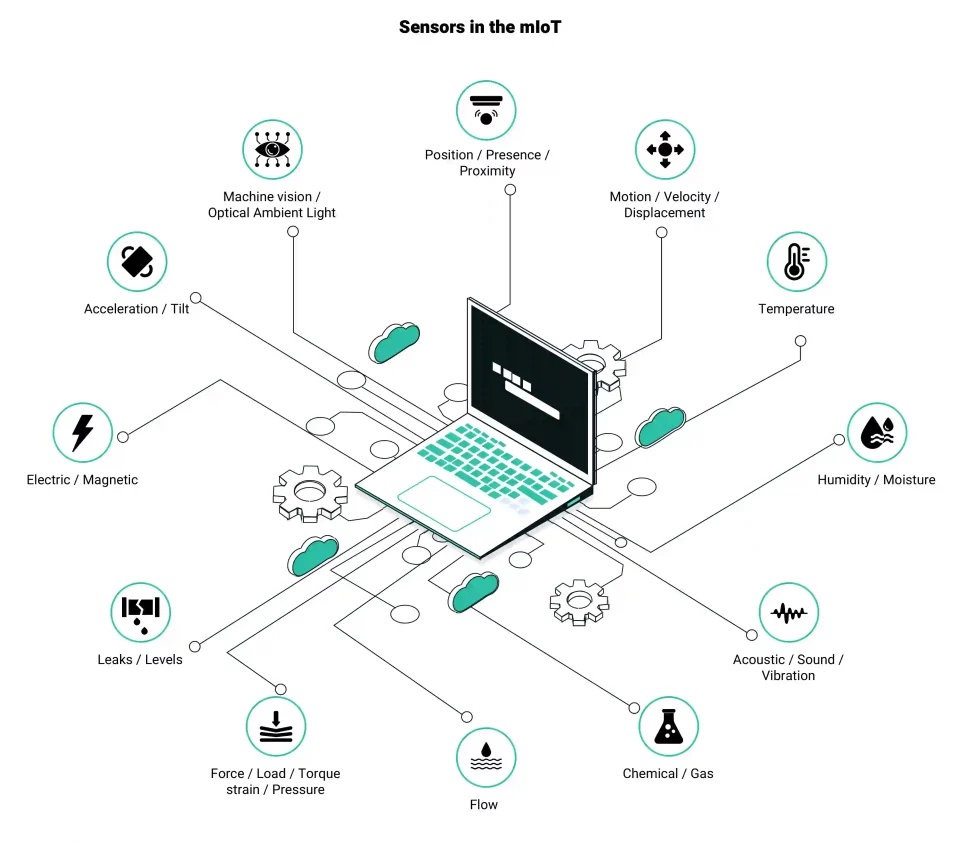
The “sensorability” of medical devices makes RTLS possible
Design & Development
While IoT sensors that monitor clinical parameters are mostly built into the devices, you may need to add RTLS sensors into the equipment. We recommend that you design the RTLS with a task-technology fit approach and align asset tracking to the over-arching KPIs. Set up an RTLS implementation committee with an executive leader and stakeholder representatives as members to:
- Select assets and tracking technology -single or combination
- Define par levels for assets
- Establish a uniform naming protocol for assets
- Develop a data governance policy
- Finalize guidelines for users
- Prepare a process workflow and ownership
- Set KPIs and target outcomes with reporting
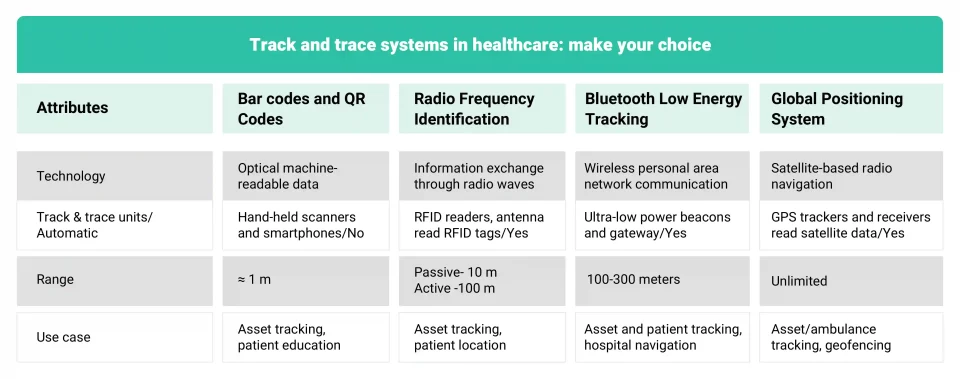
RTLS data can be streamed to the HAIMS server, to detect the live location
The following implementation steps comprise concrete actions that you must take to put into effect all the plans and preparations you made in the pre-implementation stage.
Defining requirements and scope: Make sure the functionalities, features, and integration points of the RTLS-based hospital asset inventory management system are designed to meet the hospital’s specific needs and goals. A well-designed RTLS impacts performance by boosting the utilization of resources through vertical, horizontal, and specialized tracking (refer RTLS figure)
Start procurement and sign contracts
Draw up a detailed list of all the hardware requirements, software licenses and the services you will need from various vendors. Negotiate a fair price and review contracts and service level agreements before signing up. Do not hurry through the process, and ensure you enter into mutually beneficial and cost-effective partnerships with competent professionals with expertise in the healthcare domain.
Outline the roll-outplan and configuration
It is time to set timelines and begin work to achieve milestones. Spell out responsibilities and map dependencies. Work with your technology partner to configure a robust and secure Hospital Asset Inventory Management Solution (HAIMS), including user profiles, access level permissions, workflows, and data interfaces. Begin the installation of RTLS tags, beacons, or codes, as the case may be.
Phased deployment approach
Pilot testing HAIMS in a controlled environment is the way to go forward. Validate the system in terms of functionality, performance, and integration capabilities. You may be surprised to find many little issues cropping up. Stay cool and address all the niggling problems before you expand on the deployment to cover the additional departments, buildings, or locations as per the plan.
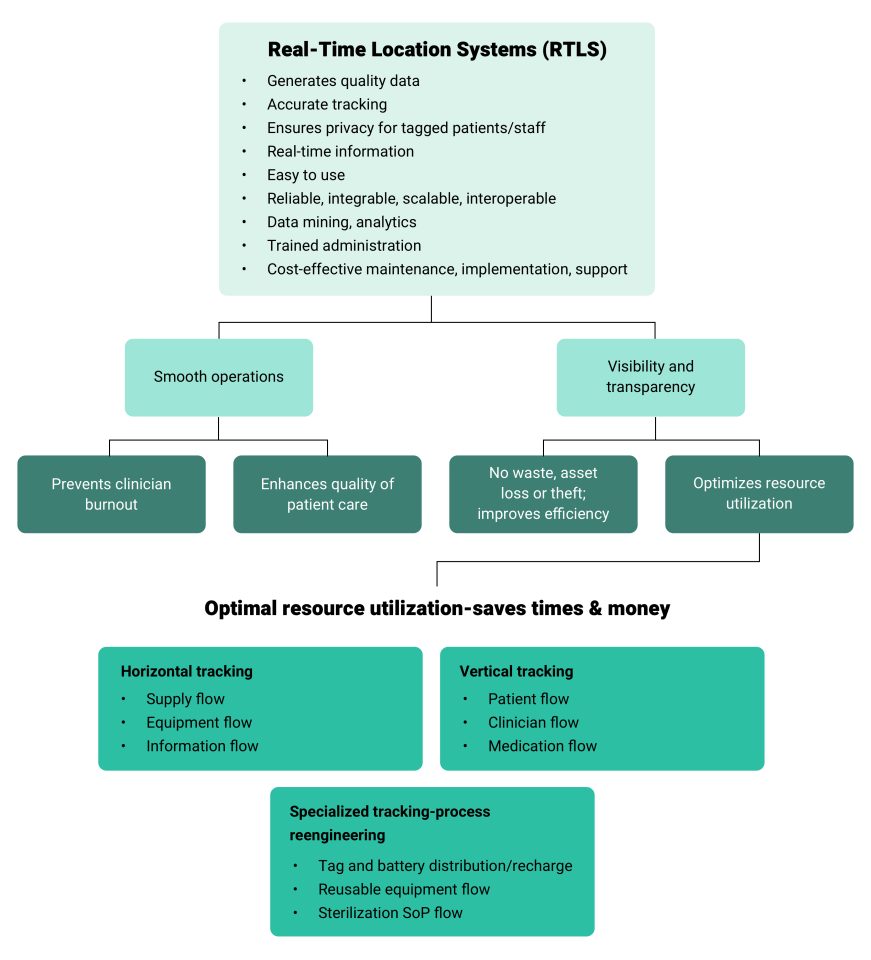
Source: Adapted from Research Gate paper
Roll out and keep watch
Roll out HAIMS across the healthcare facility when all the implementation hiccups are attended to. You can schedule training sessions and extend support to end users to streamline as required. Get your technology partner to stay on-site to monitor the system performance and respond to user feedback. There may be problems with usage, and you may be able to identify some areas for improvement. Focus on optimizing the system and ensuring user satisfaction.
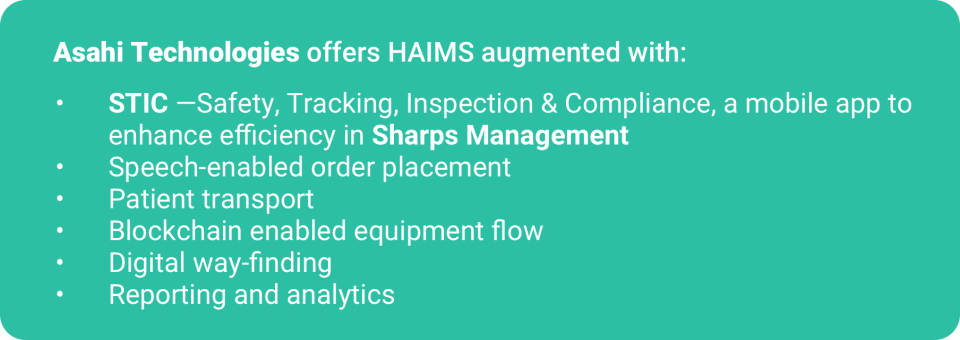
A quick snapshot of your HAIMS journey
- Our partnership begins when you first contact us!
- We begin by understanding your requirements through several rounds of discussions.
- We visit your healthcare facility and understand the challenges you are trying to address.
- If you are new to the digital technologies space, we do the handholding and guide you through the paper-to-digital transformation process
- Alongside, we help you leapfrog into a digital asset tracking and inventory management environment.
- If we find you are an early adopter and digital transformation enthusiast, we get down to the brass tacks.
- We assign a dedicated implementation team once we contract with you.
- The HAIMS team will guide you (including sharing this and other resources) on pre-implementation preparations.
- Utmost importance will be given to CUSTOMIZATION requests, and our technical experts will INNOVATE to provide an extra edge.
- We will help you procure and install the most cost-effective and useful BLE beacons and gateway devices.
- Our team will train all user categories on the highly intuitive web-based SaaSproduct, complete with an administrative dashboard, single sign-on, and mobile app-based order placement, fulfillment, and inventory management.
- We test launch HAIMS and assist you round-the-clock to troubleshoot.
- Once all stakeholders are on board, we take the solution LIVE!
- We maintain and support HAIMS and will stay in touch always…once a partner, always a dependable provider!
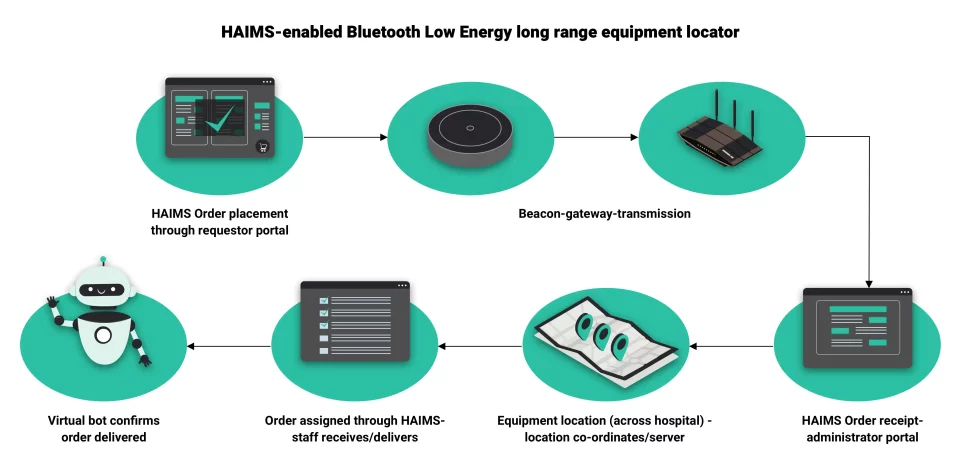
HAIMS-BLE is an affordable solution for RTLS regardless of asset value
Post-implementation phase
We do not assume that everything will fall into place from day one. We take many steps to ensure ongoing system performance, usability, and alignment with your organizational objectives.
User adoption and training: Continued training and support help to promote system adoption and proficiency. As your HAIMS partner, we can provide refresher courses, online resources, and help desk support to address concerns.
Performance monitoring: Monitoring the KPIs linked to asset utilization, inventory accuracy, order fulfillment, and operational efficiency will reveal trends and anomalies. The reporting and analytics functionality of HAIMS will utilize the data gathered to discover ways to optimize the system performance and resource allocation or utilization.
System maintenance and upgrades: As a technology partner, we provide regular software updates, patches, and hardware maintenance. This helps to enhance HAIMS’ functionality, stability, and security.
Data management and quality assurance: Periodic audits and reconciliation processes will help to identify discrepancies and address data quality issues promptly. Data governance policies established by the asset management committee should be adhered to maintain the integrity, accuracy, and confidentiality of asset and inventory data.
Compliance and regulatory updates: To mitigate risks and uphold stakeholders’ trust, stay abreast of changes to regulatory requirements and industry standards related to asset management, data privacy, and security.
Scalability and continuous improvement: Our team at Asahi Technologies believes in Agile and a culture of continuous improvement. Rest assured, we will scale and expand our HAIMS deployment as your hospital grows and evolves. Fresh modules are continually under development and will be added to the Asahi Technologies Hospital Operations Platform (ATHOP).

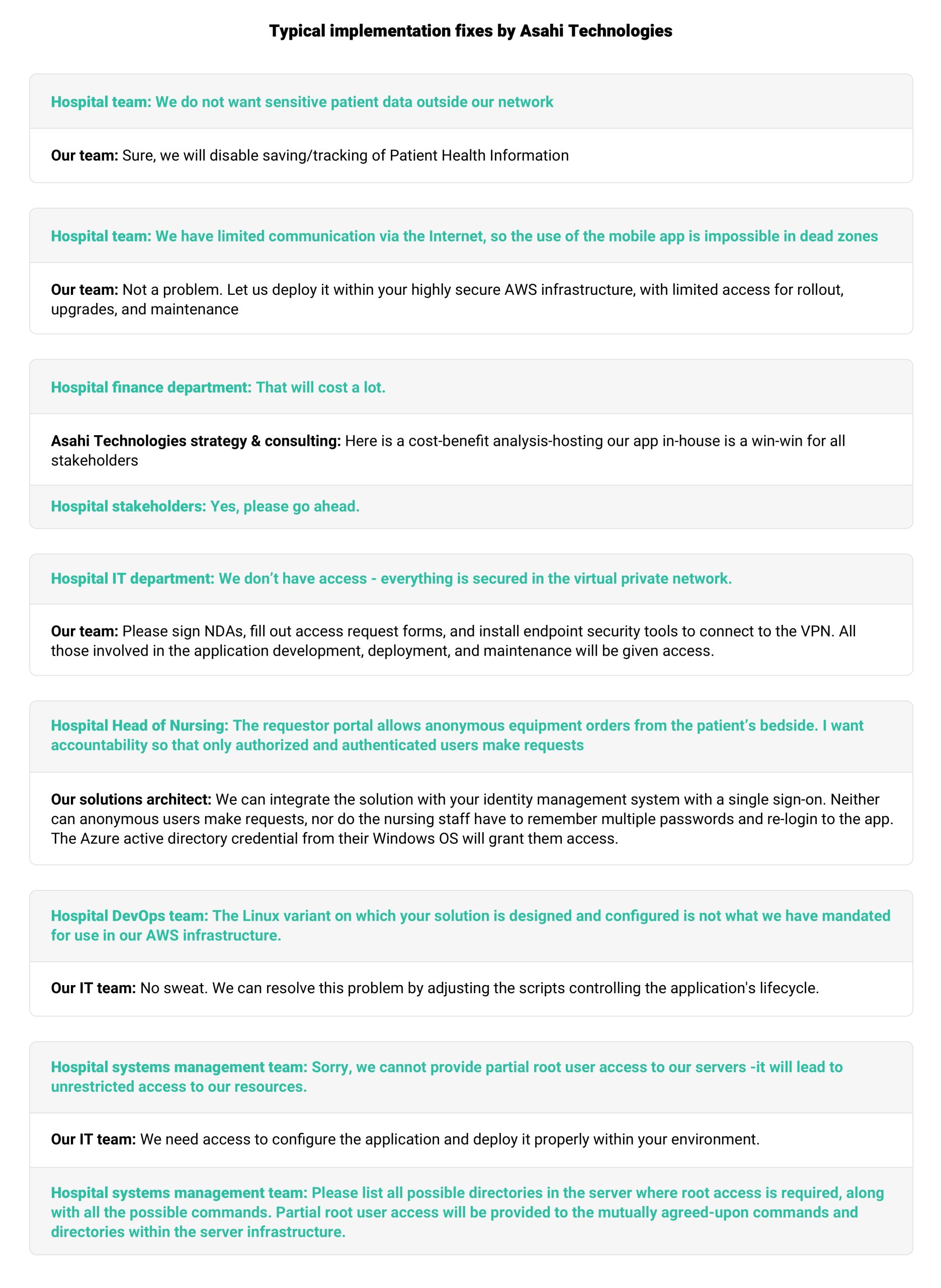
End note: Sometimes, 7-8 months may pass between the pilot and the actual go-live! We do not rush to complete a project, but we do try to work within your timelines without compromising on the high standards that we hold ourselves to.
1460 Broadway, New York, NY 10036
